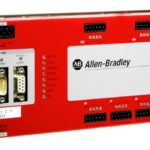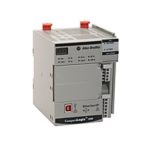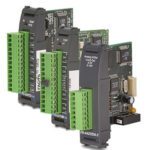By Steve Meyer || Tag naming starts with naming the I/O in a control system. The names might only serve as a bookkeeping convenience for documenting in ladder programs, but in the complex environment of today’s PLC and PAC platforms, tag names are more significant. Tag names can serve as a referent for I/O points in totally […]
PLCs + PACs
FAQ: How to unify distributed I/O with PACs when building new?
By Steve Meyer || A major hardware cost in control systems is that for inputs and outputs. Devising the most suitable arrangement of I/O takes creation of an I/O map. Then grouping I/Os by location helps engineers identify packaging needed to deploy hardware correctly. One caveat: Unless one is using new breeds of design software, mapping and […]
Motion Controllers for Networked PLCs
Advanced Micro Controls Inc. (AMCI), announces the addition of their ANF1 & ANF2 motion controllers with network communication, expanding their family of AnyNET Networked Specialty I/O products. AMCI’s ANF1 & ANF2 stepper/servo controllers integrate a network connection and expansion capabilities to provide a modern, versatile motion control solution for any PLC-based system. ANF1 & ANF2 […]
IDEC releases version 8.2.2 of WindLDR PLC programming software
IDEC Corp. now offers Version 8.2.2 of its WindLDR PLC programming software, a PC-based platform used to program IDEC’s FC6A MicroSmart PLC. The software can also be used to program IDEC’s entire line of PLCs. IoT capability is provided by custom web pages which can be configured for remote monitoring and control. Web pages are created […]
Delta launches ISPSoft Version 3.0 controller programming software for machine automation
Delta now offers a new version of its controller programming software to include logic and motion in one integrated environment. The software is fully IEC 61131-3 compliant, supporting all 5 languages — Ladder Logic, Function Block Diagram, Structured Text, Instruction List, and Sequential Function Chart. It also extends the base by adding Continuous Function Chart capability. Click […]
FAQ: What are PLC function blocks and how does IEC 61131-3 classify them?
According to the IEC 61131-3 standard, there is a difference between a function and a function block in PLC programming. The main difference involves internal memory. So for instance, a function can be described as something like an equation or formula that accepts inputs and calculates an output value. Moreover, it always returns the same […]
PLC versus safety PLC
All PLCs (programmable logic controllers) do essentially the same thing; control some machine process. Typical PLC functions include timing, control, and sequencing of such actions as turning motors, pumps or valves on or off. A safety PLC, on the other hand, is a dedicated controller specifically built and certified to meet safety requirements, such as […]
FAQ: Is a PLC fast enough to meet my application’s requirements?
Knowing if your PLC is fast enough and can handle your application is really a two-part process. That is, it can be looked at from two different but intertwined perspectives; one is from the PLC perspective and the other is from the application level. The most important factors are knowing the specifics of the application […]
FAQ: What are some PLC I/O, visual display, and networking options?
A PLC can be a highly customizable controller, depending on application needs. And with advances in technology, the options designers have continue to expand. Specifically, we focus here on three types of options; I/O (input/output), visual displays, and networking. I/O I/O options can be classified in several ways, including some basic groupings such as analog […]
Select the right machine controller for your application
by Don Pham, Product Manager, IDEC Picking the right type of machine controller will minimize costs and complexity, while still providing the performance required for the application. Many different controller options are available for machine automation, giving you the opportunity to select a controller closely matched to the application. All those choices can cause confusion. […]











